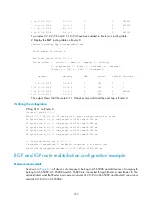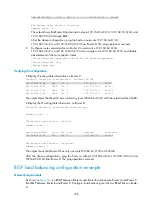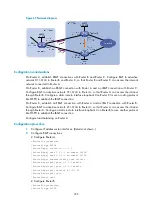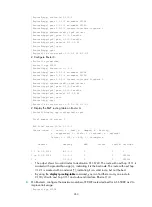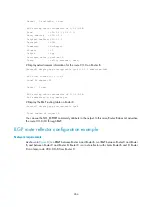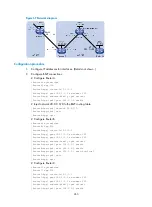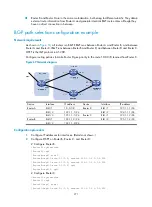
260
[RouterB-bgp] router-id 2.2.2.2
[RouterB-bgp] peer 3.1.1.2 as-number 65008
[RouterB-bgp] peer 3.3.3.3 as-number 65009
[RouterB-bgp] peer 3.3.3.3 connect-interface loopback 0
[RouterB-bgp] address-family ipv4 unicast
[RouterB-bgp-ipv4] peer 3.1.1.2 enable
[RouterB-bgp-ipv4] peer 3.3.3.3 enable
[RouterB-bgp-ipv4] network 9.1.1.0 24
[RouterB-bgp-ipv4] quit
[RouterB-bgp] quit
[RouterB] ip route-static 3.3.3.3 32 9.1.1.2
# Configure Router C.
<RouterC> system-view
[RouterC] bgp 65009
[RouterC-bgp] router-id 3.3.3.3
[RouterC-bgp] peer 3.1.2.2 as-number 65008
[RouterC-bgp] peer 2.2.2.2 as-number 65009
[RouterC-bgp] peer 2.2.2.2 connect-interface loopback 0
[RouterC-bgp] address-family ipv4 unicast
[RouterC-bgp-ipv4] peer 3.1.2.2 enable
[RouterC-bgp-ipv4] peer 2.2.2.2 enable
[RouterC-bgp-ipv4] network 9.1.1.0 24
[RouterC-bgp-ipv4] quit
[RouterC-bgp] quit
[RouterC] ip route-static 2.2.2.2 32 9.1.1.1
# Display the BGP routing table on Router A.
[RouterA] display bgp routing-table ipv4
Total number of routes: 3
BGP local router ID is 1.1.1.1
Status codes: * - valid, > - best, d - damped, h - history,
s - suppressed, S - Stale, i - internal, e - external
Origin: i - IGP, e - EGP, ? - incomplete
Network NextHop MED LocPrf PrefVal Path/Ogn
* > 8.1.1.0/24 8.1.1.1 0 0 i
* >e 9.1.1.0/24 3.1.1.1 0 0 65009i
* e 3.1.2.1 0 0 65009i
{
The output shows two valid routes to destination 9.1.1.0/24. The route with next hop 3.1.1.1 is
marked with a greater-than sign (>), indicating it is the best route. The route with next hop
3.1.2.1 is marked with an asterisk (*), indicating it is a valid route, but not the best.
{
By using the
display ip routing-table
command, you can find there is only one route to
9.1.1.0/24 with next hop 3.1.1.1 and outbound interface Ethernet 1/2.
3.
On Router A, configure the maximum number of ECMP routes destined for AS 65009 as 2 to
improve link usage.
[RouterA] bgp 65008







